October 2018
Designer Spotlight: 855 Brannan Apartments Rooftop Community Space
Read more
Here in the Midwest, we’ve been pining for sunshine and warm temperatures. We know spring will happen eventually—sooner rather than later, we hope—but until we can enjoy some QOT (quality outdoor time), we’re planning ahead to designing for outdoor spaces. Whether that’s a porch, patio, or deck, it’s important to choose materials that work for your outdoor design. Here are our top tips for how to make an outdoor space look and feel like an extension of your interior design.
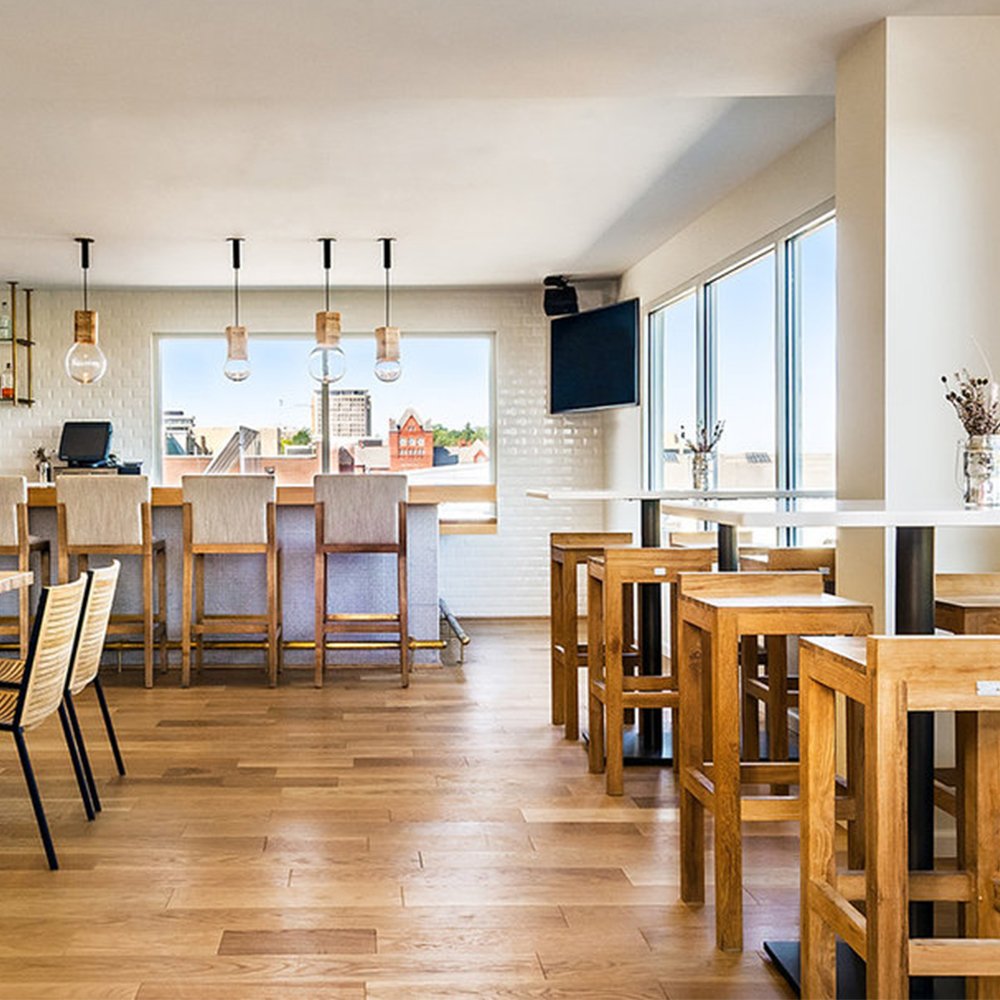
Start by looking at the architectural materials, such as floors and walls, of the interior.
Can these be carried from the indoor space to the outdoor one? Stone, concrete, and tile are ideal for outdoor use, and some woods work beautifully outdoors. If your indoor materials aren’t weather-resistant—for instance, drywall or cork flooring—consider whether they can be extended outward as a transitional area, by about 4 to 6 feet, under an awning, portico, or other covering.
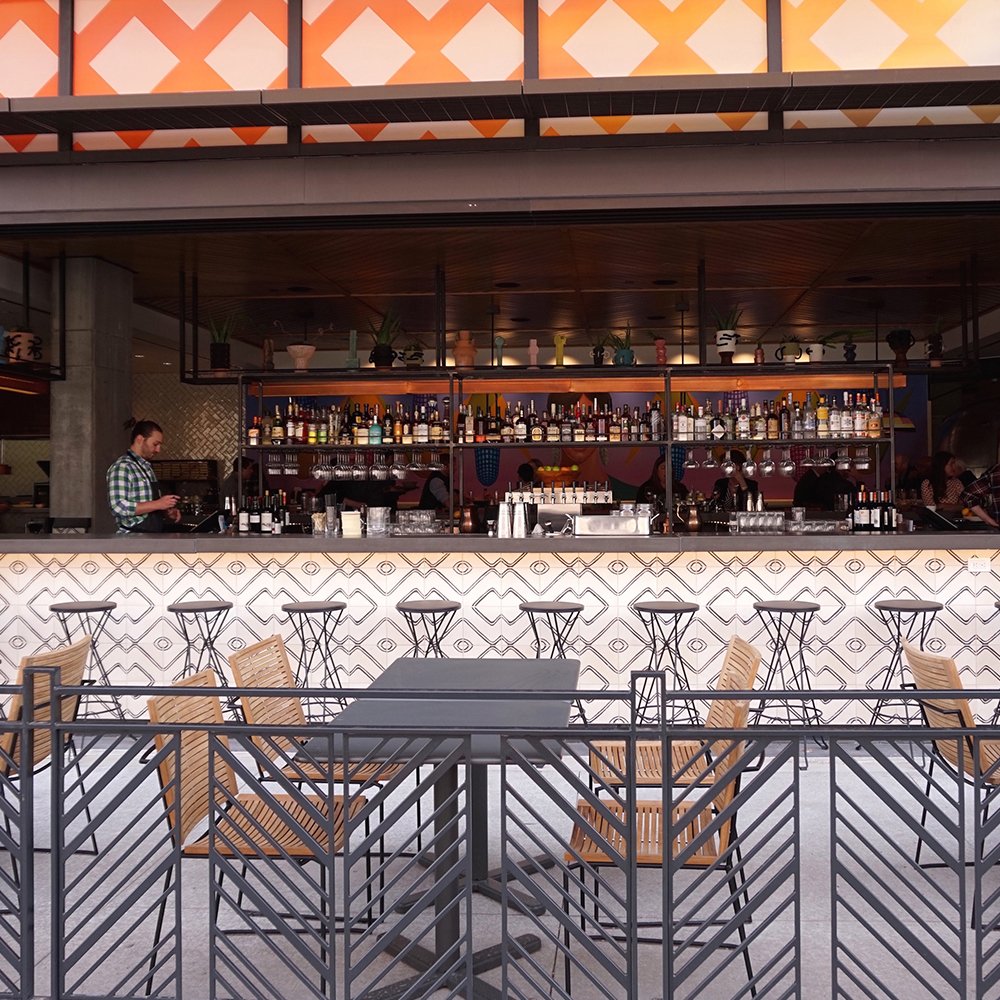
Look for outdoor furniture crafted of materials that are outdoor-hardy.
Stone, ceramic, stainless steel, and teak furniture are durable enough to stand up to both frequent use and the whims of the weather, and still look fantastic year after year. Avoid inexpensive, machine-made outdoor furniture; it might look good straight out of the box, but the welding and joints often aren’t carefully secured and don’t hold up over time. There’s a recognizable wow factor to outdoor furniture that’s been made by hand, using time-tested techniques, with each part of the process attended to and meticulously checked for quality control.
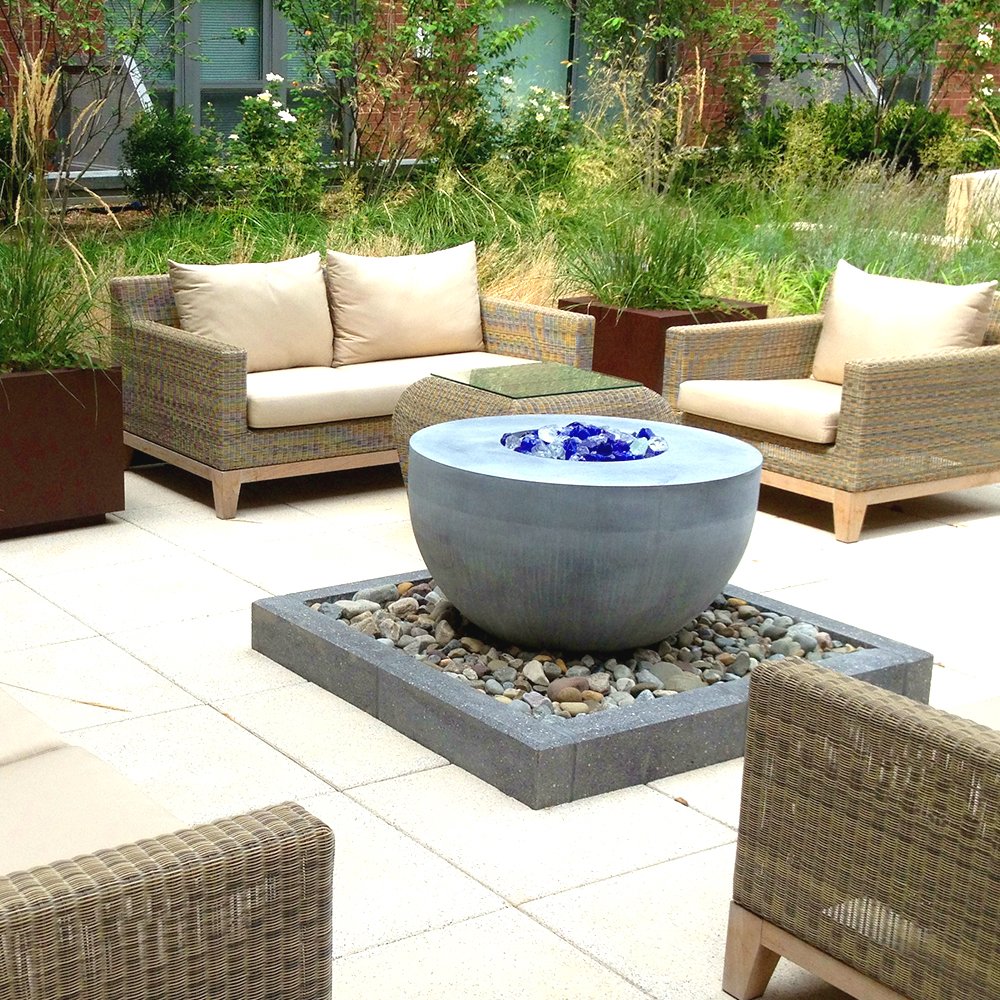
Don’t forget the feels.
Inexpensive furniture really gives itself away here, with a rougher, often sloppy or lumpy feel under the hand and body, or finishes that peel or crack in hardly any time at all.
Invest in high-quality outdoor furniture that has frames and tops that are smooth to the touch, cushions with equal distribution of filling, and a polished character that can go from indoors to outdoors with ease.
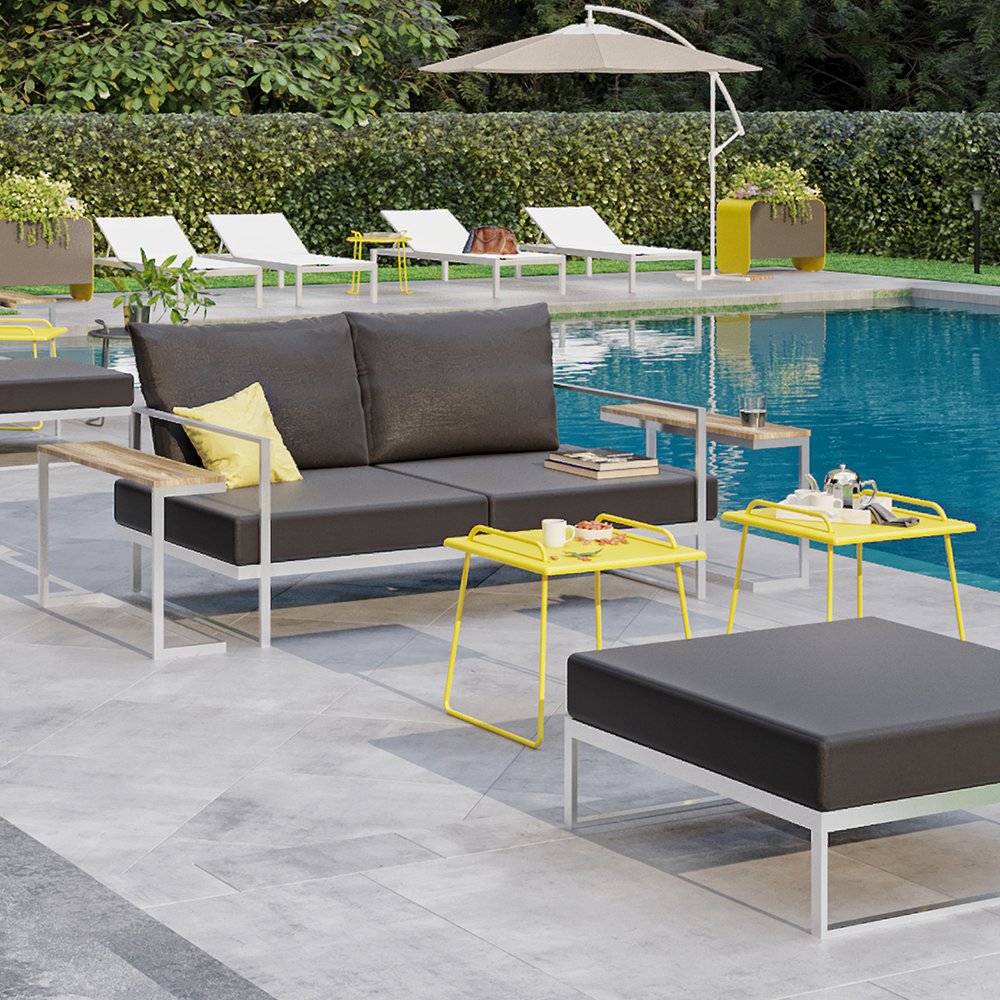
Choose textiles based on durability and weather resistance.
A couple of decades ago, we were stuck with a pretty narrow selection of outdoor upholstery and accessories. But today there are dozens of fabrics to choose from for seat and sofa covers, rugs, and throw pillows—many of which are great for indoor use, as well, especially if there are kids or pets in the mix! Look for rugged yet refined fabrics like polypropylene, PET, recycled polyester, canvas, or solution-dyed acrylic (such as Sunbrella). Bonus: most of these can be washed in a machine or with a hose and a scrub brush, and left outdoors to dry. It doesn’t get much simpler than that.
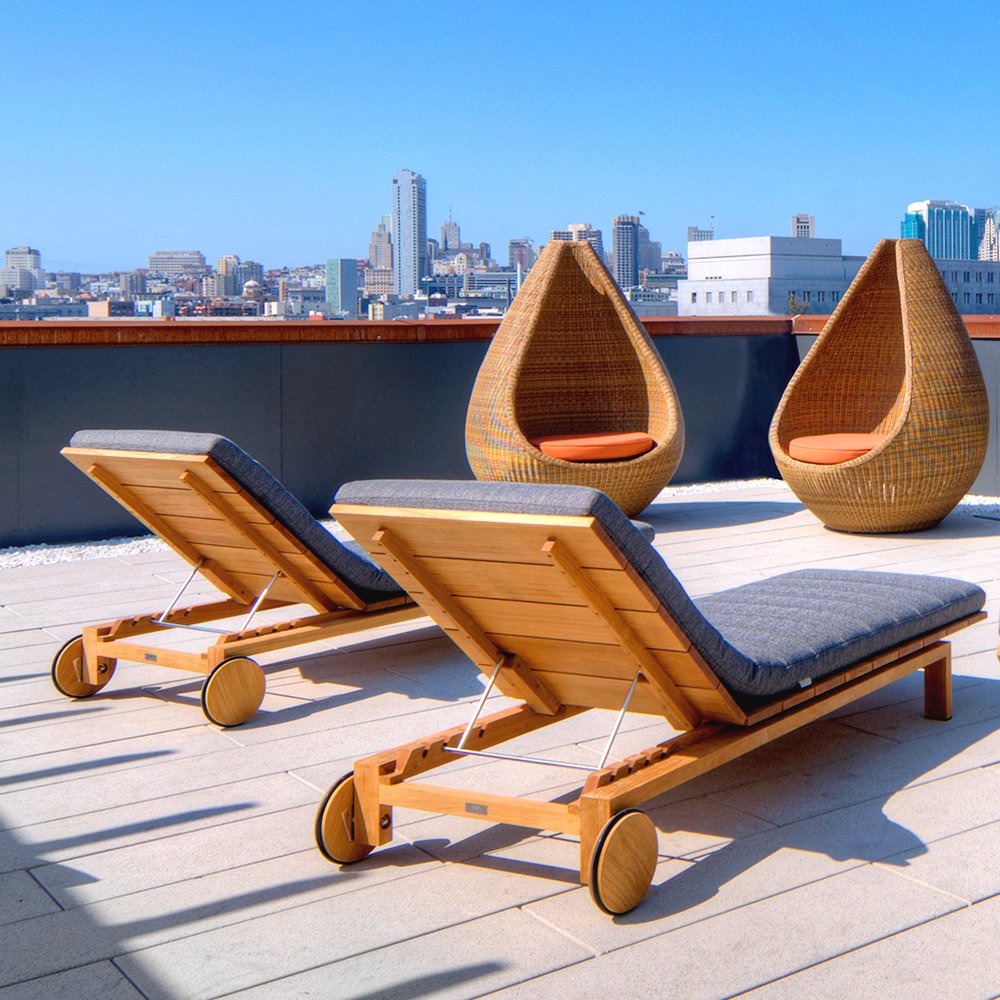
Remember that woods will change color when used outdoors.
That lovely toasty orange-red teak accent chair you included in the living room? It would age to a cool silvery gray outdoors. This isn’t necessarily a bad thing; it’s just something to consider if you’re trying to carry the same color palette from indoors to outdoors. Think about how those pieces will look in a few years, not just how they look when brand-new, and you’ll never feel like your outdoor and indoor spaces seem disconnected.
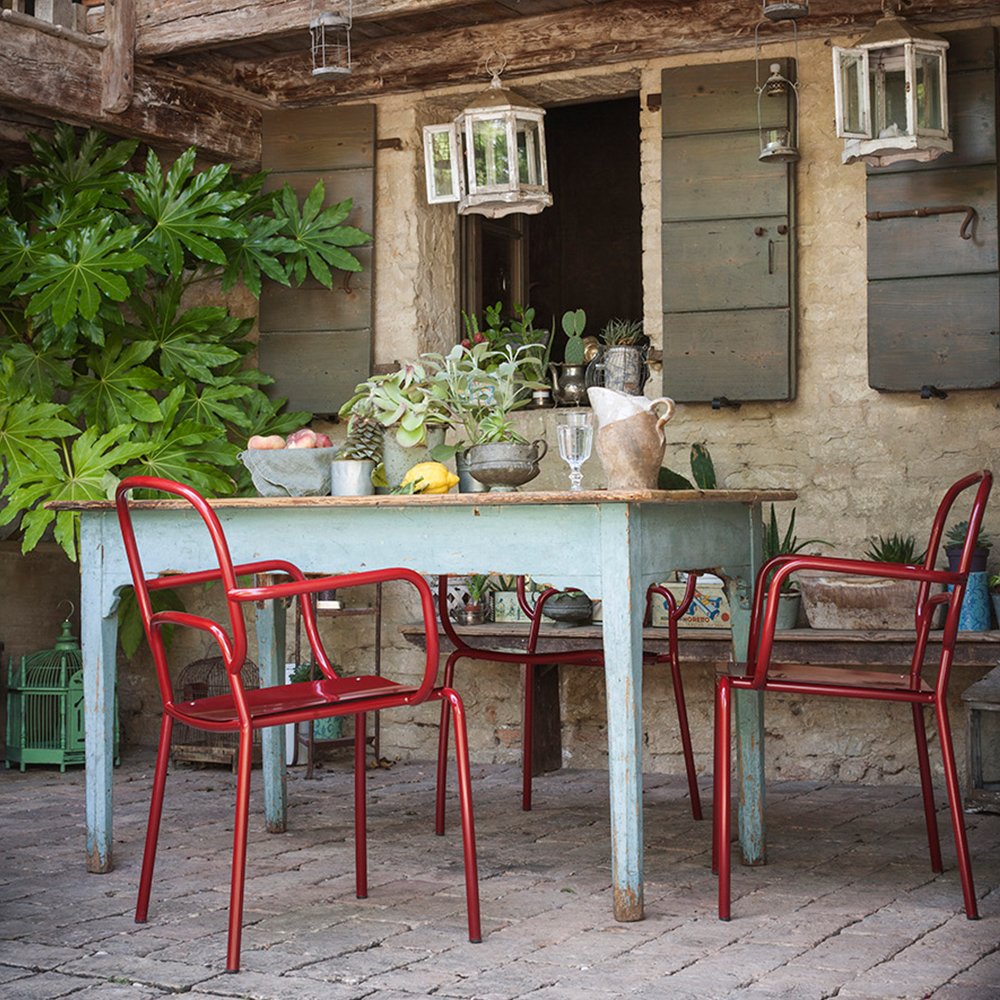
Play with the palette.
Extend your color scheme from indoors to outdoors. For instance, choose seat cushions for your outdoor furniture in the same color as your indoor drapery. Or choose the same pattern in complementary colors—a chevron rug in charcoal gray indoors and in taupe outdoors.
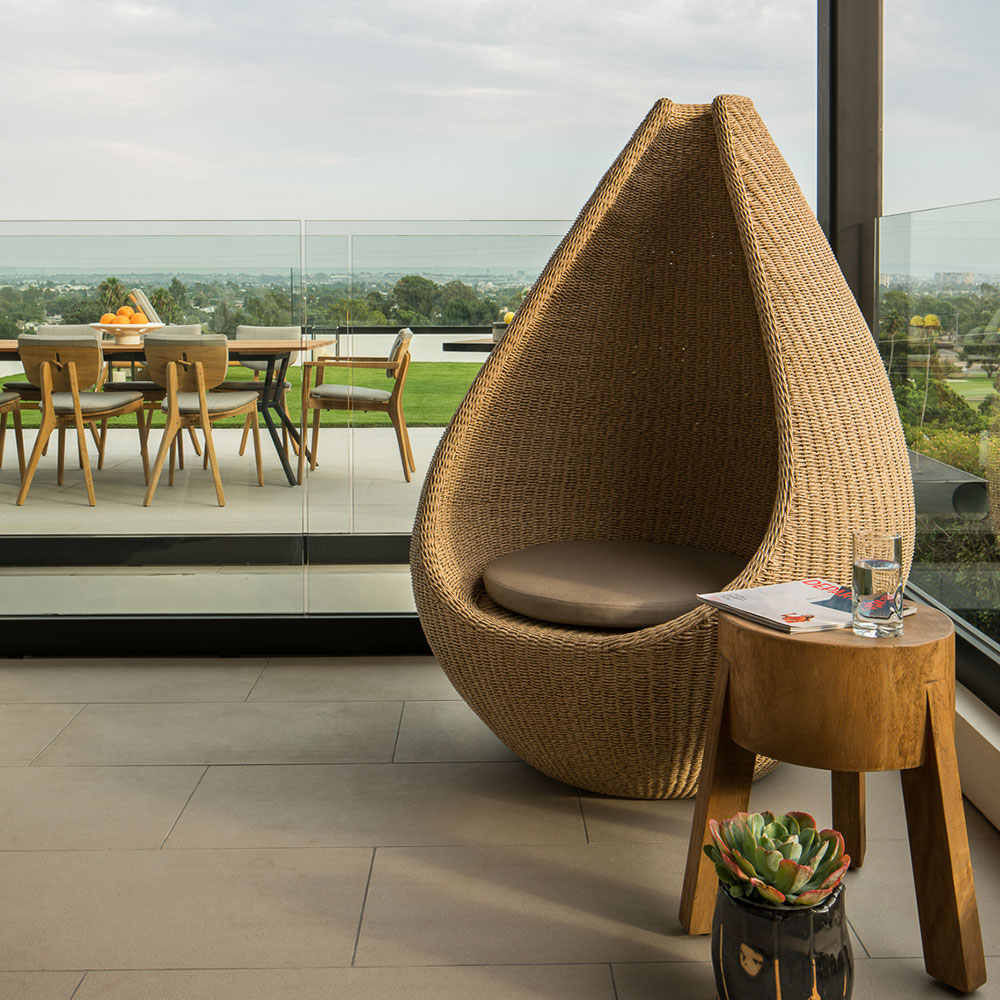
Bring the outdoors in, too.
Instead of focusing on designing your new outdoor space with elements that echo your interior, think about how you can modify the interior to make it more complementary. For example, if you love the modern feel of slatted wood and stainless steel furniture outside, add a few chairs or a small sofa in the same materials to your sunroom, living room, dining room, or other indoor space that opens to the outside.
Likewise, try including some of the same plants that you’ve used outside in your indoor design. Not only will this help carry your design throughout the two spaces, but the plants will act as noise absorbers and air filters, as well, which means extra health and wellness benefits for everyone inside.
Paying attention to the details will make a big difference in designing outdoor spaces that transcend time and trends. Whether you’re designing a porch, patio, or deck, it’s important to choose accents and materials that work for your outdoor design.
The little details make a big difference in design. Follow these simple guidelines for how to make an outdoor space look like an extension of your interior, and you’ll create conversation-starting spaces that transcend time and trends.